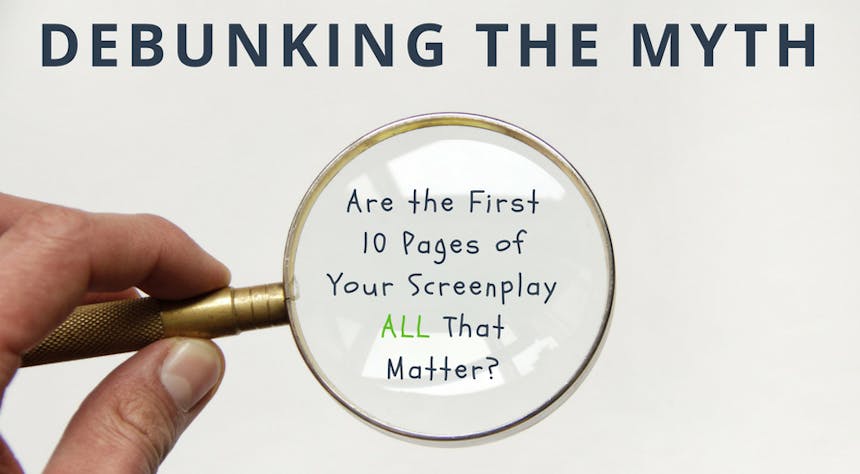With one click
Export a perfectly formatted traditional script.
Many writers often ask about the “myth” regarding the first 10 pages of a screenplay. They ask, “Is it true? Are the first 10 pages of my screenplay really ALL that matter?”
Export a perfectly formatted traditional script.



Although it is unfortunate, this “myth” is actually more of a truth. While the first 10 pages are not ALL that matter, they carry close to, if not, THE most weight when it comes to getting your entire screenplay read and potentially purchased.
According to statistics shared in an article by Script Magazine, we can safely estimate that over 200,000 scripts are completed each year. 200,000 scripts, at an average of 110 pages each, means over 22 MILLION pages waiting to be read. That is a crazy number of scripts and an even crazier number of pages!
Now, with this in mind, we must remember that there are only so many hours in a day. We can’t expect script readers, producers, or directors to be able to get through all these scripts and certainly not all these pages. This is where the importance of the first 10 pages of your screenplay come in.
Due to the sheer volume of scripts needing to be read, it is not uncommon that readers will only review the first 10 pages of a script before making the decision to either 1) continue reading or 2) toss it aside and move on to the next script.
In order to prevent your screenplay from Fate #2, you must be sure that the first few pages grab and hold the attention of your readers. Push them to read Page 11, 12, 100! Now, this absolutely does not justify adding in unnecessary elements just for the sake of getting their attention, but it does mean that you need to carefully craft each and every one of those pages to ensure that it is the best that it can possibly be.
As screenwriter, Erik Bork says:
“The main job of this section is to get readers understanding, interested in, and even starting to emotionally invest in your main character and their world.”
Create a hook and then reel them in.
If you don’t have the hook, you don’t have anything. Don’t underestimate the importance of these pages.
Not sure where to start? For tips on writing your first 10 pages, be sure to stay tuned for our next blog post: 10 Tips for Writing Your First 10 Pages.